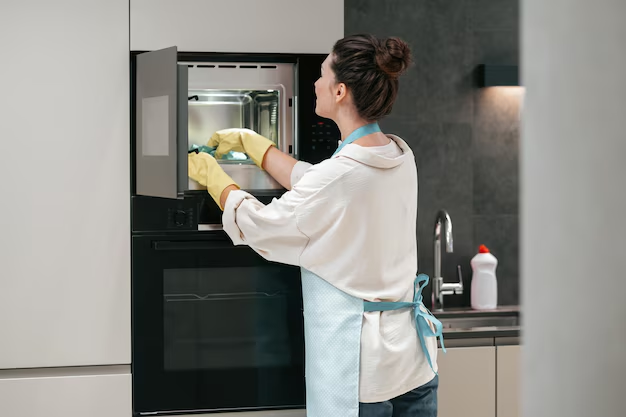Why Your Refrigerator Might Stop Cooling and How to Address It
Few household appliances are as essential as the refrigerator. Whether it's a cozy studio apartment or a sprawling family home, a fridge is the heart of the kitchen, preserving food and keeping ingredients fresh. But what happens when this cornerstone of convenience stops cooling effectively? That's where things can get tricky. Let's delve into the reasons why a refrigerator might fail to maintain a cool temperature and what you can do about it.
Understanding Refrigerator Cooling Problems
Before diving into specific causes, it's important to understand how a refrigerator functions. At its core, a fridge uses the principles of thermodynamics to transfer heat from the interior of the appliance to the outside environment. When this process is disrupted, the cooling efficiency suffers.
Common Causes of Cooling Issues
Here's a look at some common reasons your refrigerator might stop cooling:
Power Supply Problems: Sometimes, it's as simple as the power cord not being plugged in correctly or a tripped circuit breaker.
Thermostat Settings: An incorrectly set thermostat can lead to temperature fluctuations.
Blocked Vents: Airflow is crucial for cooling; blocked vents within the appliance can hinder optimal temperature regulation.
Dirty Condenser Coils: These coils release the heat absorbed from inside the fridge. If they are dirty, the efficiency drops.
Faulty Compressor: This is the heart of the cooling cycle. If it’s defective, the fridge won’t cool properly.
Refrigerant Leak: This can drastically impair cooling, as the refrigerant is the medium for heat transfer.
Door Seal Issues: If the door seals (gaskets) are damaged, cold air can escape, leading to a warmer interior.
Overpacked Fridge: Too much food can impede air circulation inside the refrigerator, affecting its ability to cool effectively.
By understanding these potential causes, you’re already on your way to diagnosing the problem correctly.
Diagnosing the Problem
Before calling for professional help, there are steps you can take to diagnose the problem.
Basic Troubleshooting Steps
Check Power and Settings: Ensure the fridge is plugged in, the circuit breaker isn’t tripped, and the thermostat is set to the recommended temperature setting, typically between 37-40°F (3-4°C).
Inspect Door Seals: Close the door on a dollar bill. If it slips out easily, the gasket might need replacement to ensure a proper seal.
Examine Airflow and Vents: Make sure there’s enough space around the fridge for proper airflow, and ensure interior vents aren’t blocked by food items.
Clean the Coils: Located at the back or beneath the appliance, coils should be dust-free for efficient operation. Cleaning them twice a year is advisable.
Test the Compressor: Listen closely; the compressor should make a low humming noise. Any irregular sounds or a compressor that’s silent could indicate a problem.
When to Seek Professional Help
While some issues can be identified and addressed with basic troubleshooting, others require professional intervention. Compressor issues, refrigerant leaks, and significant electrical problems are best handled by trained technicians. If your basic checks don't resolve the problem, or if you feel uncertain, reaching out to a professional is a wise choice.
Maintaining Optimal Refrigerator Performance
Preventive maintenance can extend your refrigerator's lifespan and ensure efficient operation. Here are some tips:
Regular Cleaning: Dust and debris can build up on coils and other components. Regular cleaning helps maintain efficiency.
Proper Food Storage: Avoid overcrowding to ensure good air circulation within the fridge.
Routine Inspections: Checking door seals and thermostat settings periodically can help catch potential problems early.
Set the Right Temperature: Keeping your fridge too cold or too warm can affect its performance and longevity. Stick to the manufacturer’s recommended settings.
Additional Considerations for Older Refrigerators
If you have an older model, it’s particularly important to stay on top of maintenance. Older refrigerators can be less energy-efficient and more prone to issues due to wear and tear. Here are a few points to consider:
- Energy Efficiency: Older units may consume more power, and their coolant systems might not be as efficient as modern refrigerators.
- Component Wear: Over time, components like the compressor and gaskets can become less effective. Regular maintenance checks by a professional can help prolong the life of the appliance.
- Repair vs. Replace: If frequent repairs are needed, it may be economical in the long run to invest in a newer, more energy-efficient model.
Practical Tips for Consumers
To make this information even more practical and digestible, here’s a summary of key takeaways:
🚨 Refrigerator Troubleshooting & Maintenance Checklist
- ✅ Power Check: Ensure the refrigerator is plugged in and the circuit breaker is operational.
- ✅ Thermostat Setting: Check that the temperature is set correctly.
- ✅ Door Seal Test: Use the dollar bill test to check door gaskets.
- ✅ Condenser Coils: Clean these twice a year to maintain efficiency.
- ✅ Space Management: Allow for good air circulation by not overcrowding.
- ✅ Listen for Noises: Be aware of unusual sounds that might indicate compressor issues.
Closing Insight
Ensuring your refrigerator maintains its cooling ability is essential not only for food safety but also for efficiency and appliance longevity. While some issues might seem daunting, a methodical approach to troubleshooting can often reveal the solution. Regular maintenance and being conscious of your fridge’s operational nuances are your best tools. When in doubt, don’t hesitate to contact a professional who can bring their expertise to resolve the dilemma, ensuring that your fridge continues to be a reliable kitchen companion for the years to come.
